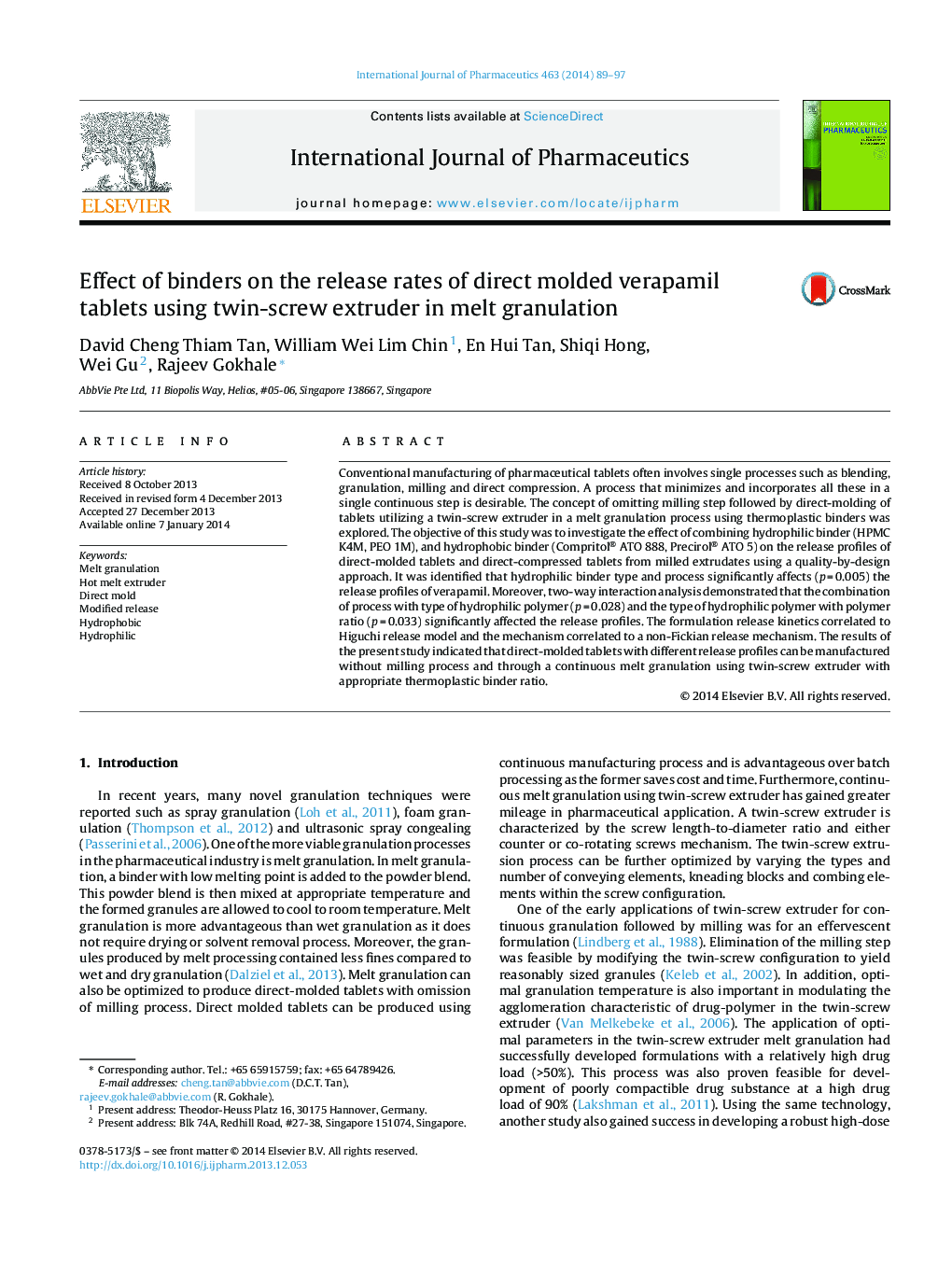| Article ID | Journal | Published Year | Pages | File Type |
|---|---|---|---|---|
| 5819968 | International Journal of Pharmaceutics | 2014 | 9 Pages |
Conventional manufacturing of pharmaceutical tablets often involves single processes such as blending, granulation, milling and direct compression. A process that minimizes and incorporates all these in a single continuous step is desirable. The concept of omitting milling step followed by direct-molding of tablets utilizing a twin-screw extruder in a melt granulation process using thermoplastic binders was explored. The objective of this study was to investigate the effect of combining hydrophilic binder (HPMC K4M, PEO 1M), and hydrophobic binder (Compritol® ATO 888, Precirol® ATO 5) on the release profiles of direct-molded tablets and direct-compressed tablets from milled extrudates using a quality-by-design approach. It was identified that hydrophilic binder type and process significantly affects (p = 0.005) the release profiles of verapamil. Moreover, two-way interaction analysis demonstrated that the combination of process with type of hydrophilic polymer (p = 0.028) and the type of hydrophilic polymer with polymer ratio (p = 0.033) significantly affected the release profiles. The formulation release kinetics correlated to Higuchi release model and the mechanism correlated to a non-Fickian release mechanism. The results of the present study indicated that direct-molded tablets with different release profiles can be manufactured without milling process and through a continuous melt granulation using twin-screw extruder with appropriate thermoplastic binder ratio.
Graphical abstractDownload high-res image (142KB)Download full-size image
